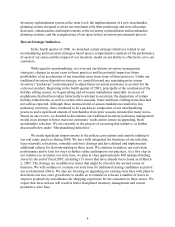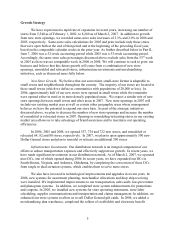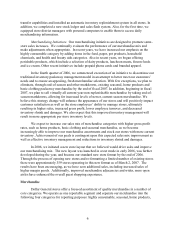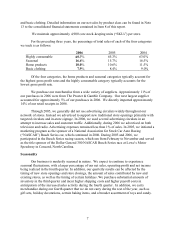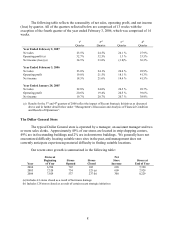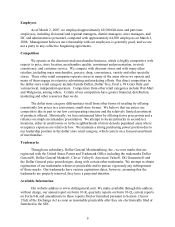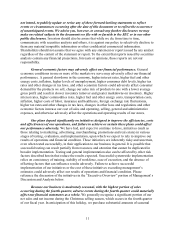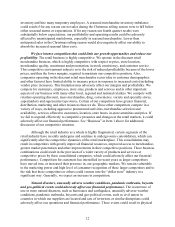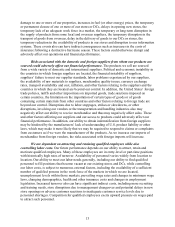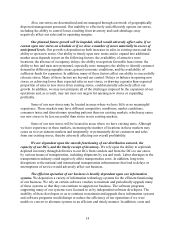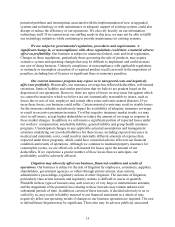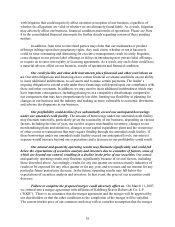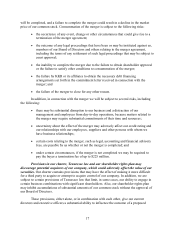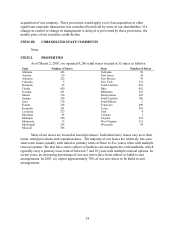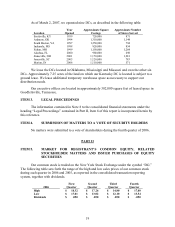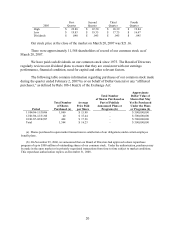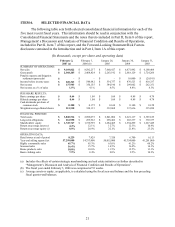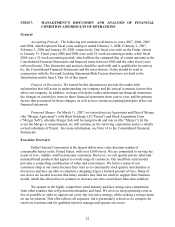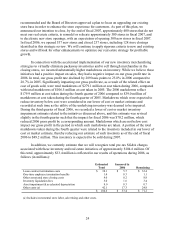Dollar General 2006 Annual Report Download - page 16
Download and view the complete annual report
Please find page 16 of the 2006 Dollar General annual report below. You can navigate through the pages in the report by either clicking on the pages listed below, or by using the keyword search tool below to find specific information within the annual report.Also, our stores are decentralized and are managed through a network of geographically
dispersed management personnel. Our inability to effectively and efficiently operate our stores,
including the ability to control losses resulting from inventory and cash shrinkage, may
negatively affect our sales and/or operating margins.
Our planned future growth will be impeded, which would adversely affect sales, if we
cannot open new stores on schedule or if we close a number of stores materially in excess of
anticipated levels. Our growth is dependent on both increases in sales in existing stores and the
ability to open new stores. Our ability to timely open new stores and to expand into additional
market areas depends in part on the following factors: the availability of attractive store
locations; the absence of occupancy delays; the ability to negotiate favorable lease terms; the
ability to hire and train new personnel, especially store managers; the ability to identify customer
demand in different geographic areas; general economic conditions; and the availability of
sufficient funds for expansion. In addition, many of these factors affect our ability to successfully
relocate stores. Many of these factors are beyond our control. Delays or failures in opening new
stores, or achieving lower than expected sales in new stores, or drawing a greater than expected
proportion of sales in new stores from existing stores, could materially adversely affect our
growth. In addition, we may not anticipate all of the challenges imposed by the expansion of our
operations and, as a result, may not meet our targets for opening new stores or expanding
profitably.
Some of our new stores may be located in areas where we have little or no meaningful
experience. Those markets may have different competitive conditions, market conditions,
consumer tastes and discretionary spending patterns than our existing markets, which may cause
our new stores to be less successful than stores in our existing markets.
Some of our new stores will be located in areas where we have existing units. Although
we have experience in these markets, increasing the number of locations in these markets may
cause us to over-saturate markets and temporarily or permanently divert customers and sales
from our existing stores, thereby adversely affecting our overall profitability.
We are dependent upon the smooth functioning of our distribution network, the
capacity of our DCs, and the timely receipt of inventory. We rely upon the ability to replenish
depleted inventory through deliveries to our DCs from vendors and from the DCs to our stores
by various means of transportation, including shipments by sea and truck. Labor shortages in the
transportation industry could negatively affect transportation costs. In addition, long-term
disruptions to the national and international transportation infrastructure that lead to delays or
interruptions of service would adversely affect our business.
The efficient operation of our business is heavily dependent upon our information
systems. We depend on a variety of information technology systems for the efficient functioning
of our business. We rely on certain software vendors to maintain and periodically upgrade many
of these systems so that they can continue to support our business. The software programs
supporting many of our systems were licensed to us by independent software developers. The
inability of these developers or us to continue to maintain and upgrade these information systems
and software programs would disrupt or reduce the efficiency of our operations if we were
unable to convert to alternate systems in an efficient and timely manner. In addition, costs and
14


